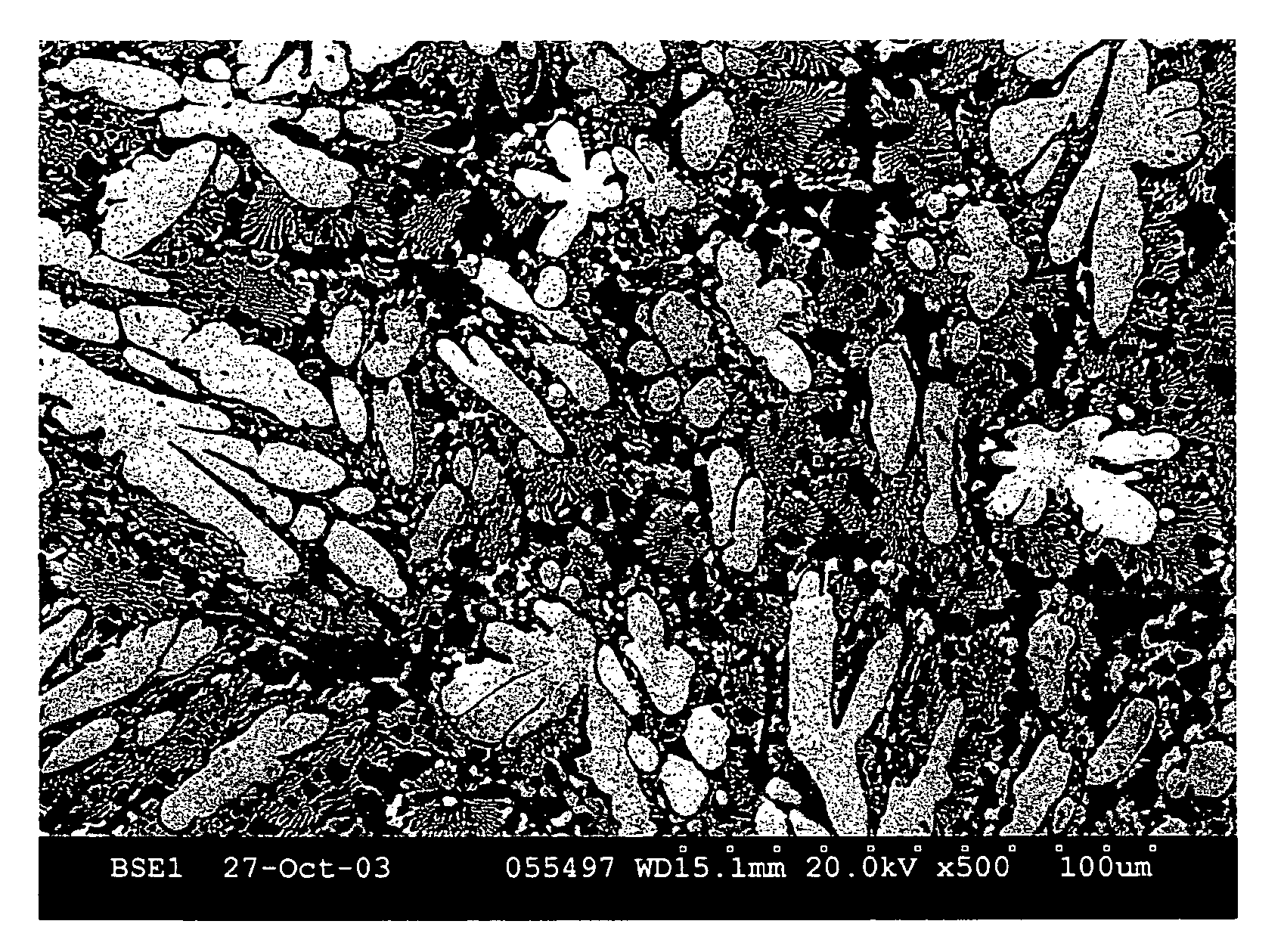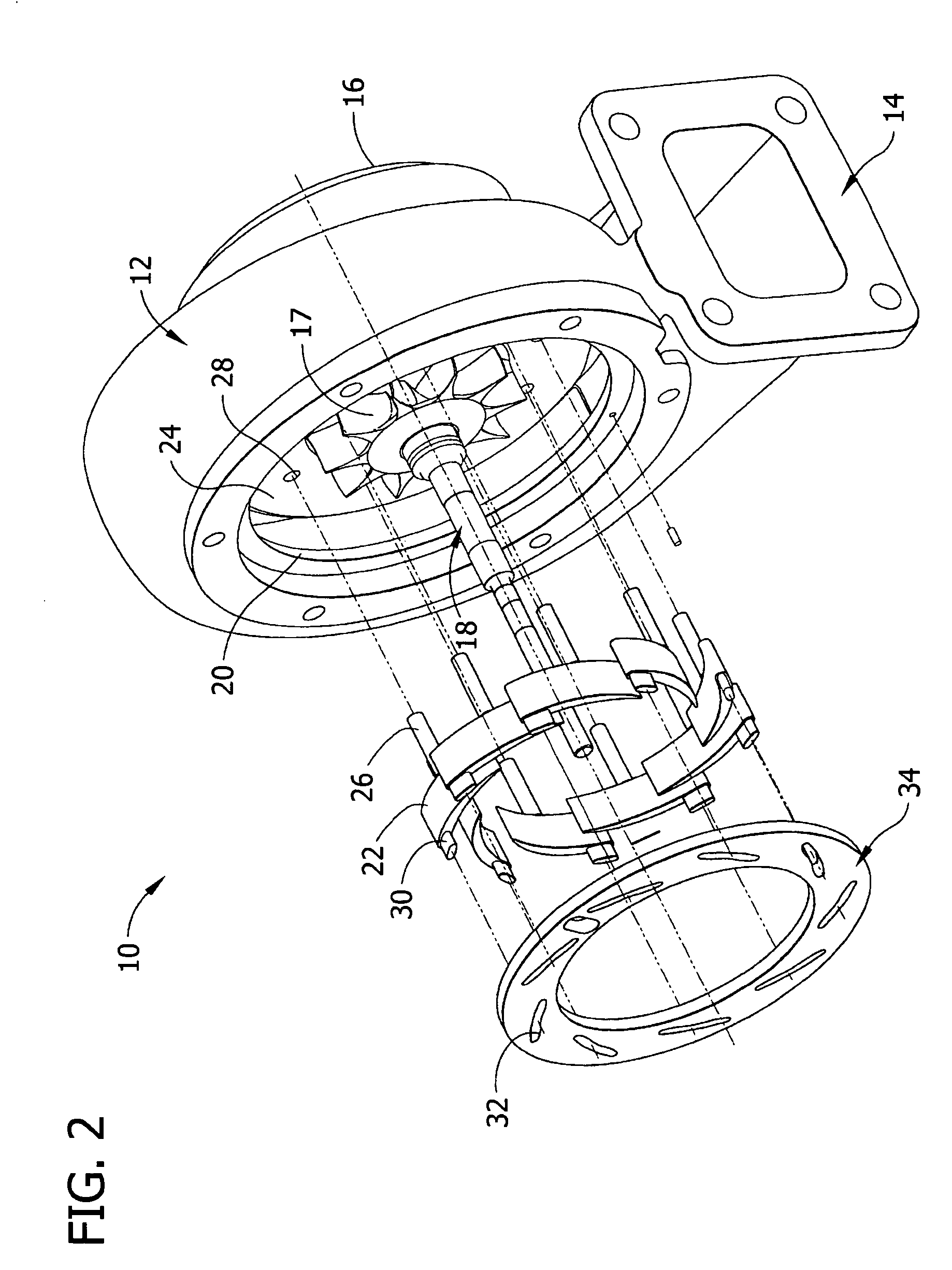Imparting high-temperature degradation resistance to components for internal combustion engine systems
a technology of degradation resistance and internal combustion engine, which is applied in the direction of diffusion coating, solid-state diffusion coating, transportation and packaging, etc., can solve the problems of weak and brittle lavage phases, cumbersome or unfeasible plasma transfer arc welding, and impede the welding process
- Summary
- Abstract
- Description
- Claims
- Application Information
AI Technical Summary
Benefits of technology
Problems solved by technology
Method used
Image
Examples
example 1
[0050] Wear tests were conducted by establishing a wear couple between pins coated according to the method of the invention and solid tiles. The pins were 0.75 inch (2 cms) long and 0.25 inch (0.6 cm) diameter. The tiles were 1.25 inch (3 cms)×1.25 inch (3 cms)×0.25 inch (0.6 cm). A long edge of the pins was applied to the tiles at a force of 14.05 N in a static air furnace at 600° C. The pins were rotated about an axis perpendicular to the tile surface for 60 minutes at a frequency of 1 Hz. Surface roughness (Ra) of the tiles was measured and is an indication of surface damage due to wear. Higher roughness indicates greater material transfer:
Pin / TileTile (Ra)T-400 on 316 ss / Cast T-400Coating / Solid0.07T-800 on 316 ss / Cast T-400Coating / Solid0.07T-400 C on 316 ss / Cast T-400Coating / Solid0.09Cast T-400 / Cast T-400Solid / Solid0.11T-800 on 420 ss / Cast T-400Coating / Solid0.13YSZ / Cast T-400Ceramic / Solid0.14PL-33 / Nitrided 316 ssSolid / Solid0.39Stellite 6B / Stellite 6BSolid / Solid0.73PL-33 / 316Sol...
example 2
[0052] Back-scattered electron image photomicrographs were taken of a T-800 coating nominally comprising B-0.15%, Cr-17%, Mo-28%, Si-3.25%, and balance Co, and are presented in FIG. 7 (150X) and FIG. 8 (50OX). The substrate was 416 stainless steel. The light particles indicating a high Mo concentration are Laves phase. Advantageously, they are evenly distributed, and there are no elongated or irregularly shaped particles, such as those often observed in castings. In particular, the microstructure, like the microstructure of FIGS. 3 and 4, contains the high-Mo Laves phase which is a generally non-dendritic, irregularly spherical, nodular intermetallic. This microstructure contributes to an improvement in ductility of the T-800 coating of the invention nominally comprising B-0.15%, Cr-17%, Mo-28%, Si-3.25%, and balance Co.
example 3
[0053] Two T-800 coating samples were prepared on a 416 stainless substrate, one according to the coating process of the invention, and the other by HVOF (high velocity oxyfuel) thermal spray coating. The two coatings were the same thickness and were indented under an equal force (hardness tester / 50 kg). The HVOF thermal spray coating exhibited cracking at the indent (FIG. 9), whereas the coating applied according to the method of the invention (FIG. 10) did not, thus demonstrating a significant improvement in ductility.
[0054] When introducing elements of the present invention or the preferred embodiments thereof, the articles “a”, “an”, “the”, and “said” are intended to mean that there are one or more of the elements. The terms “comprising”, “including”, and “having” are intended to be inclusive and mean that there may be additional elements other than the listed elements.
[0055] As various changes could be made in the above products and methods without departing from the scope of...
PUM
| Property | Measurement | Unit |
|---|---|---|
| thickness | aaaaa | aaaaa |
| temperatures | aaaaa | aaaaa |
| thick | aaaaa | aaaaa |
Abstract
Description
Claims
Application Information
 Login to View More
Login to View More - R&D
- Intellectual Property
- Life Sciences
- Materials
- Tech Scout
- Unparalleled Data Quality
- Higher Quality Content
- 60% Fewer Hallucinations
Browse by: Latest US Patents, China's latest patents, Technical Efficacy Thesaurus, Application Domain, Technology Topic, Popular Technical Reports.
© 2025 PatSnap. All rights reserved.Legal|Privacy policy|Modern Slavery Act Transparency Statement|Sitemap|About US| Contact US: help@patsnap.com



